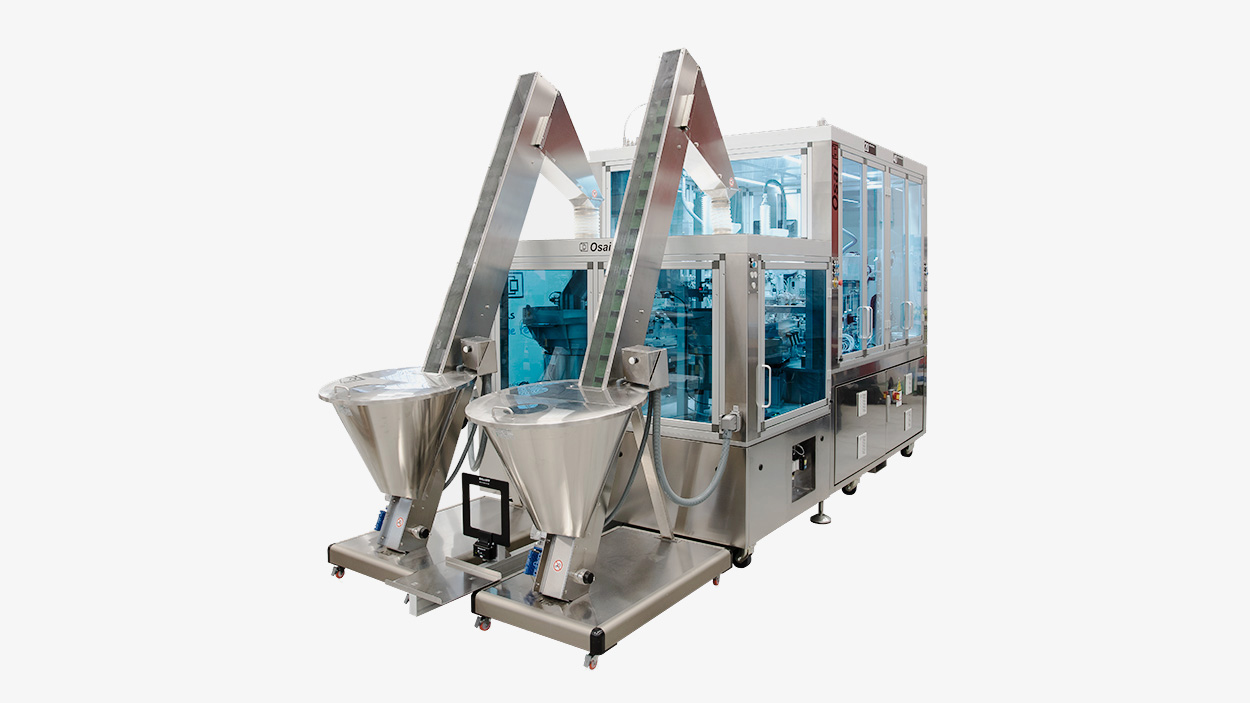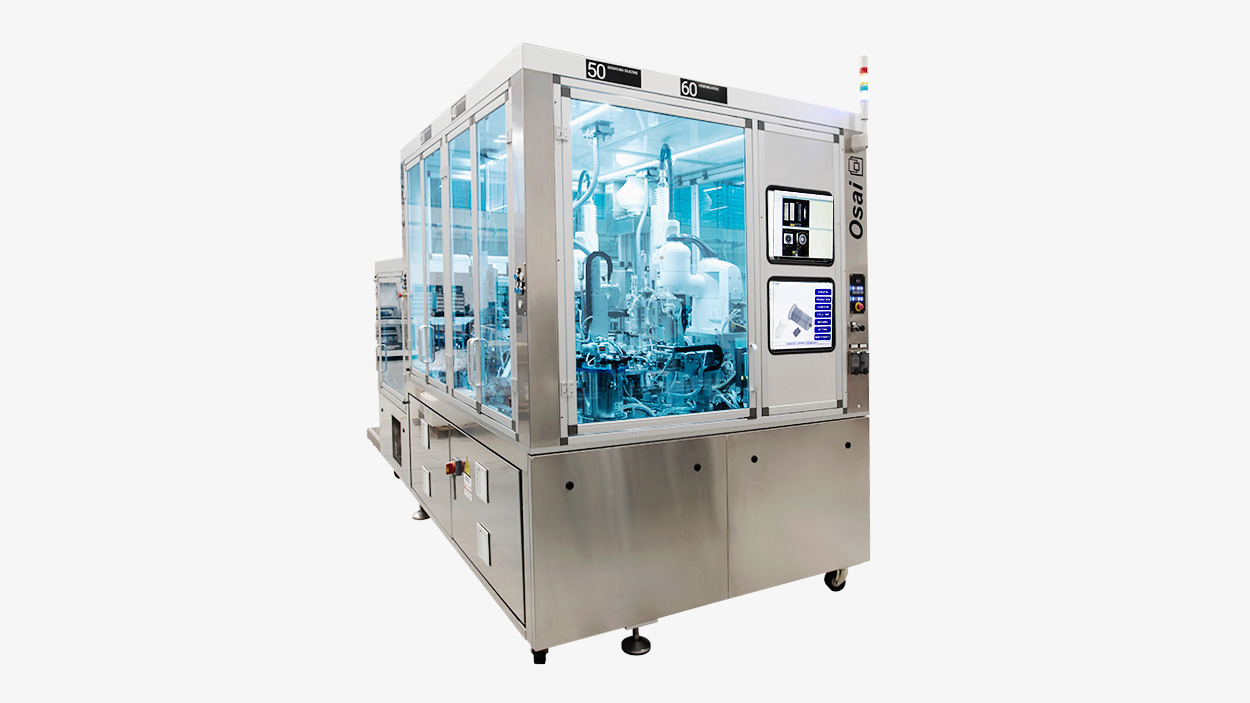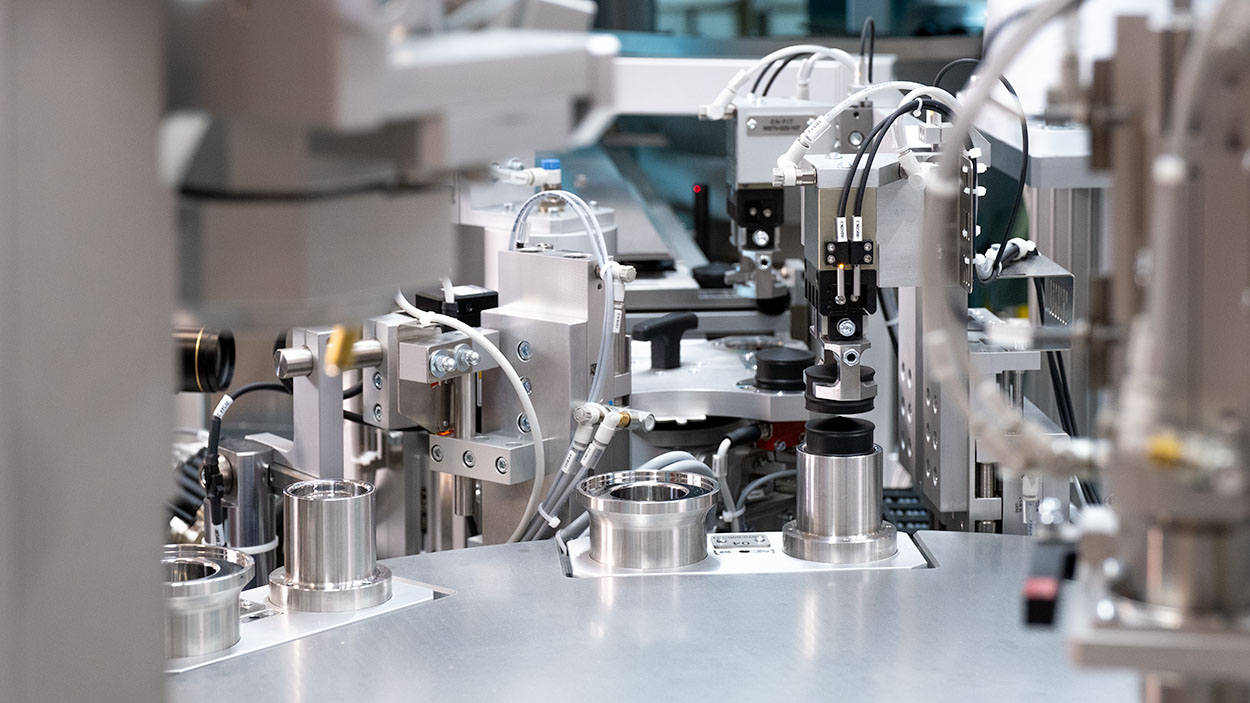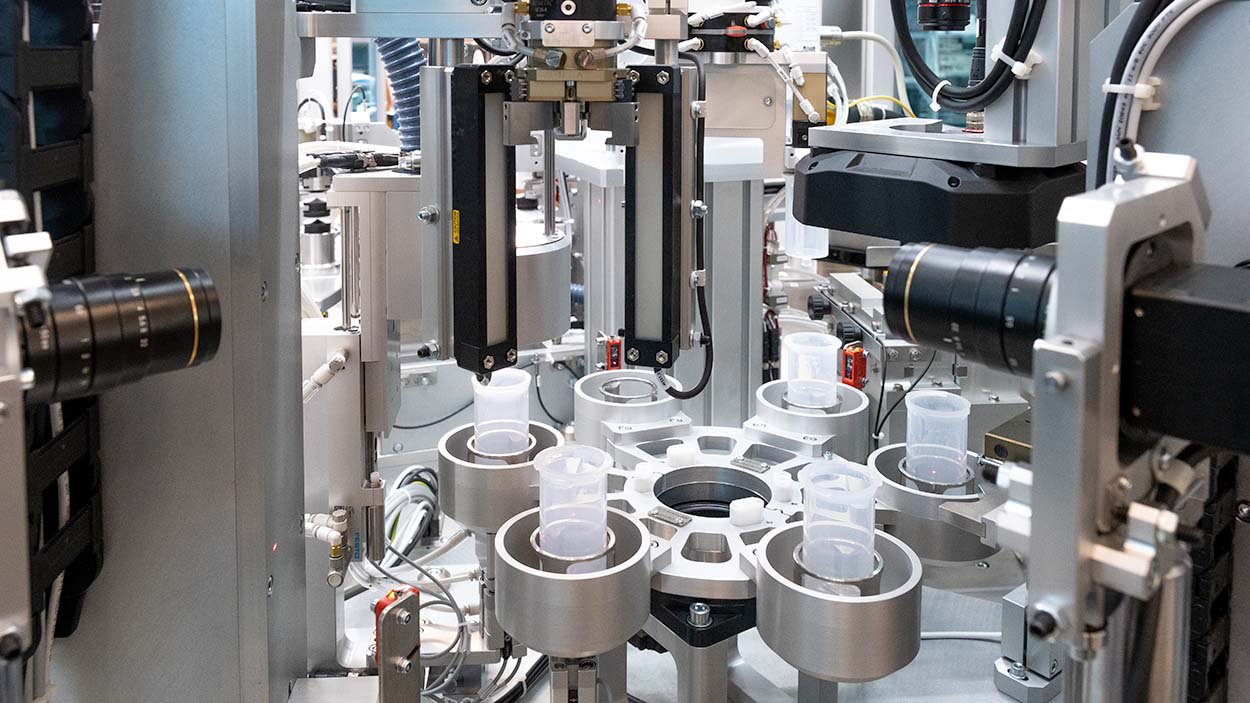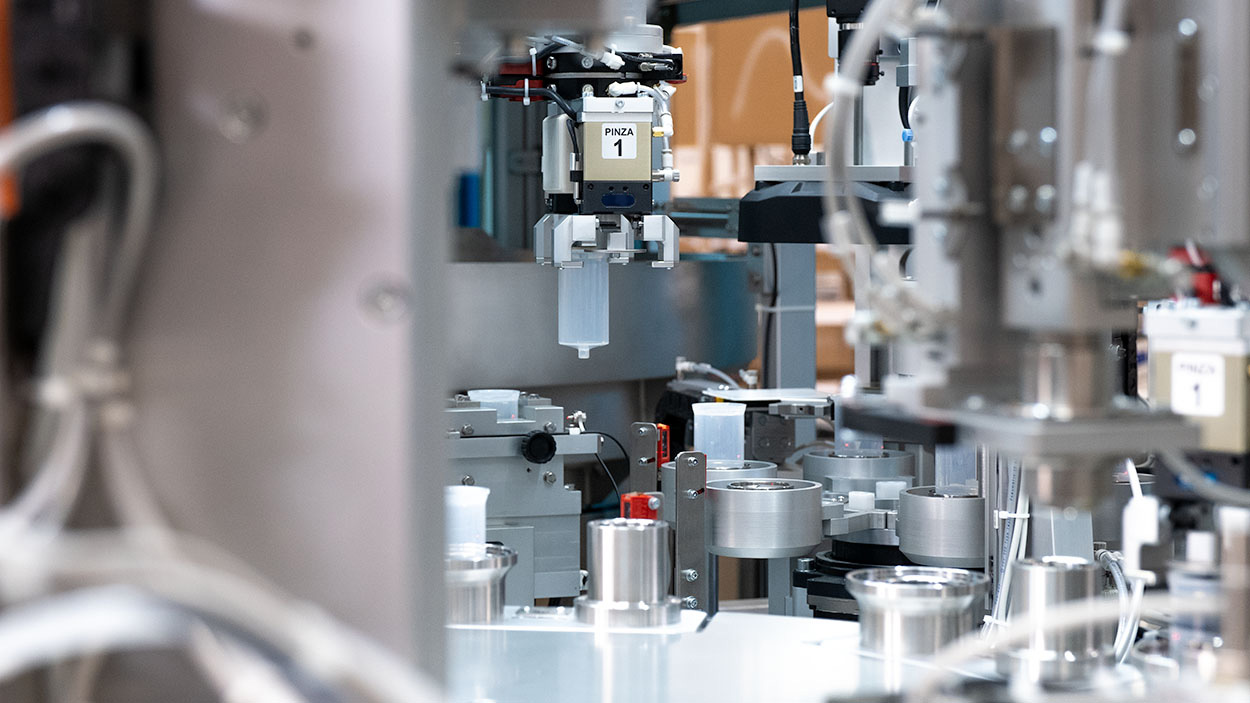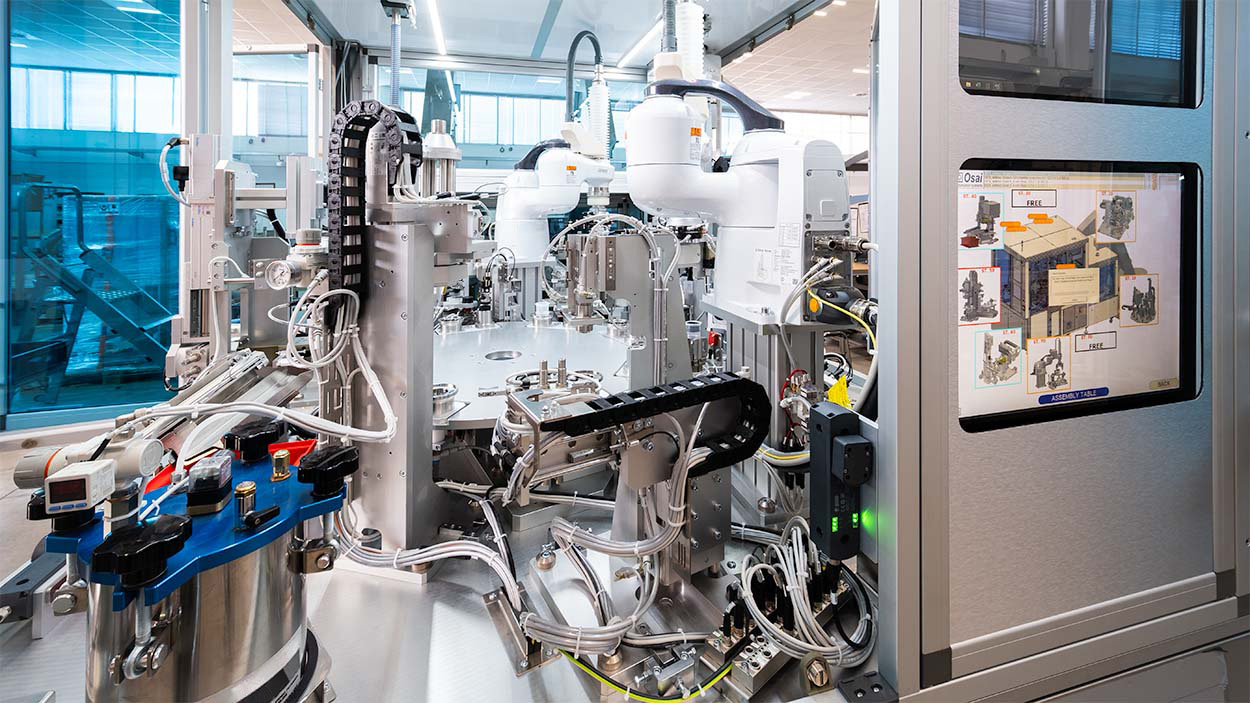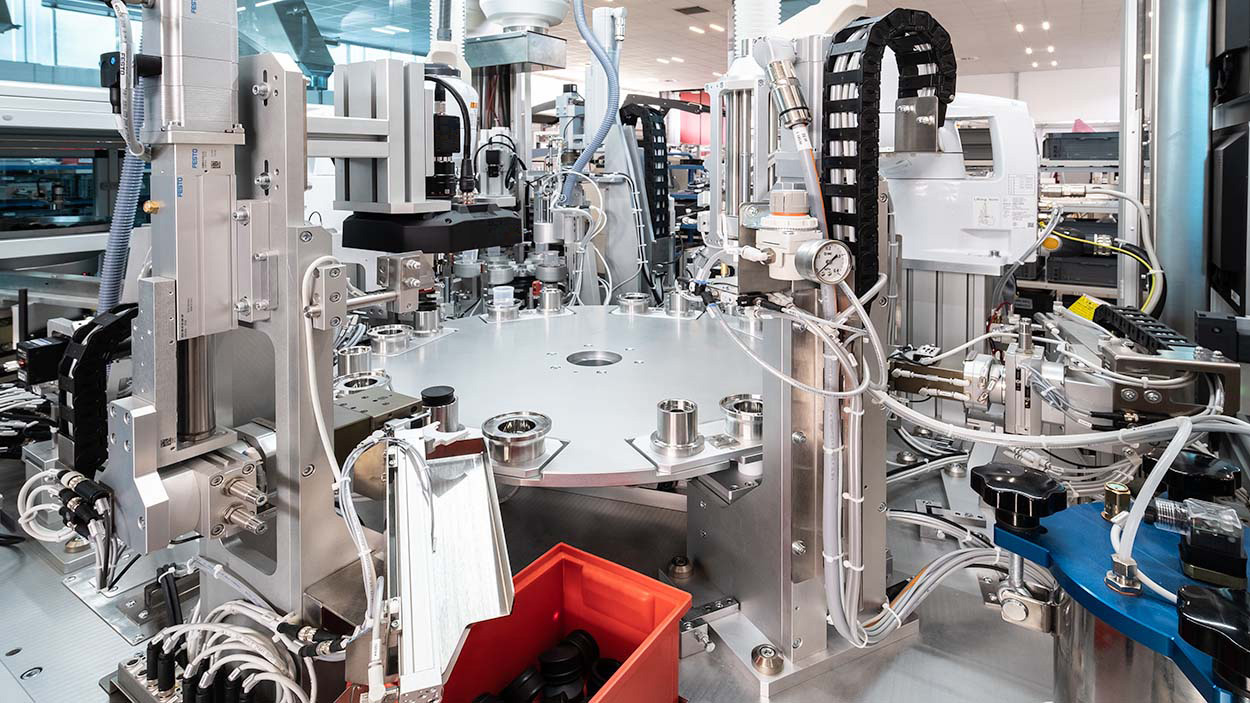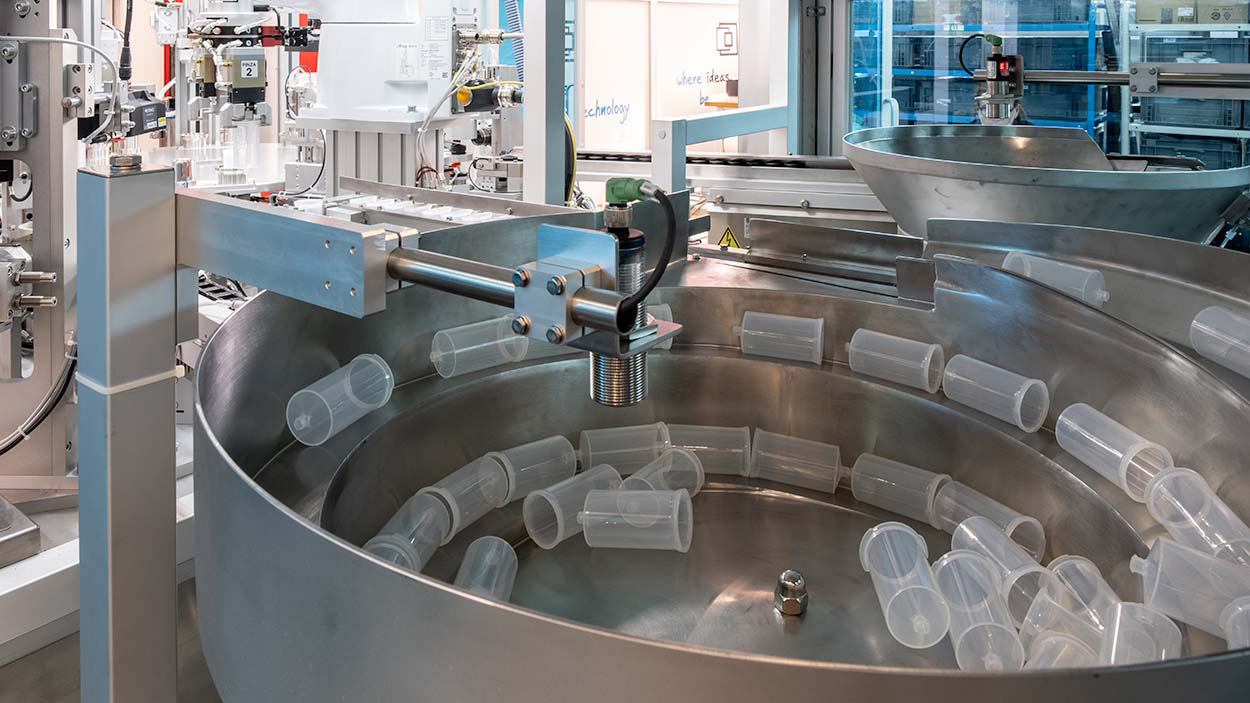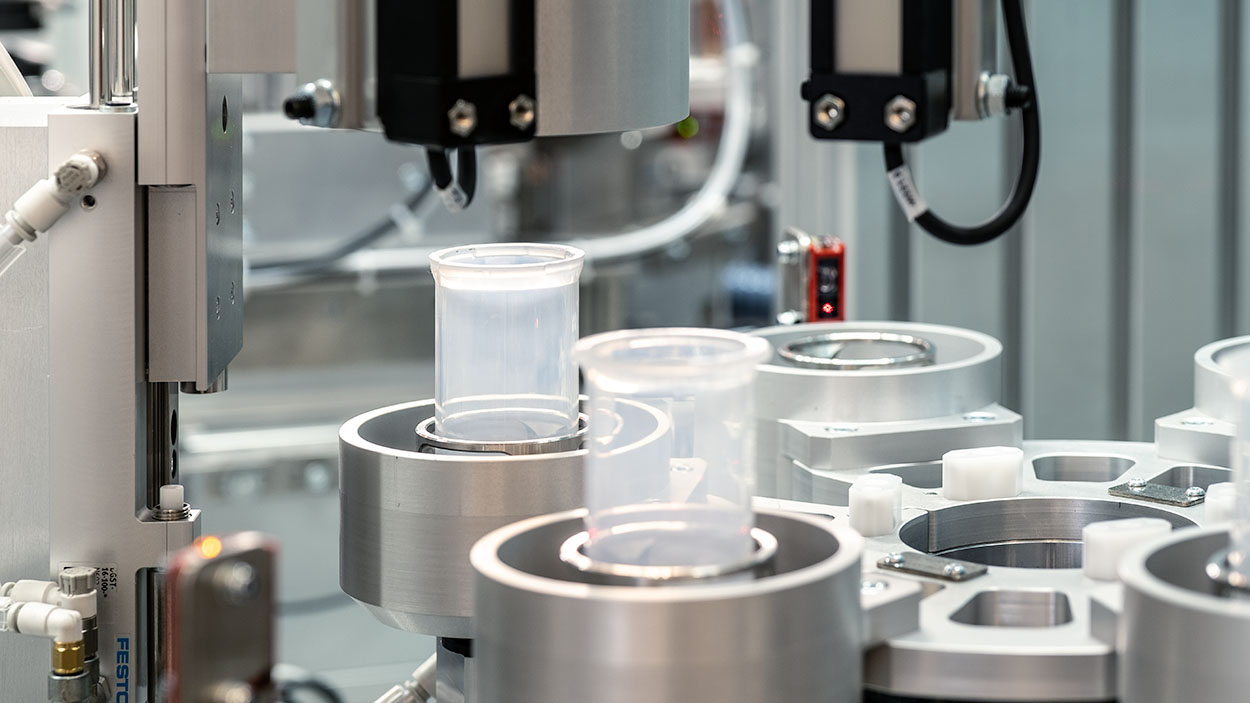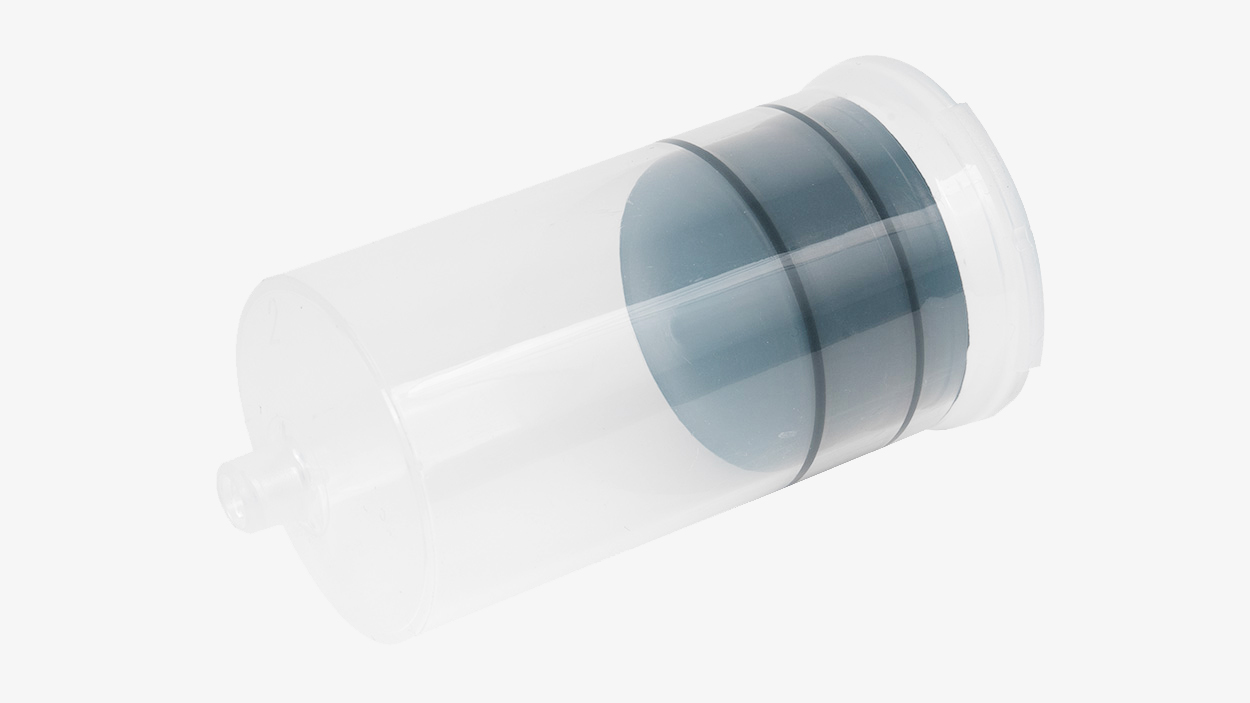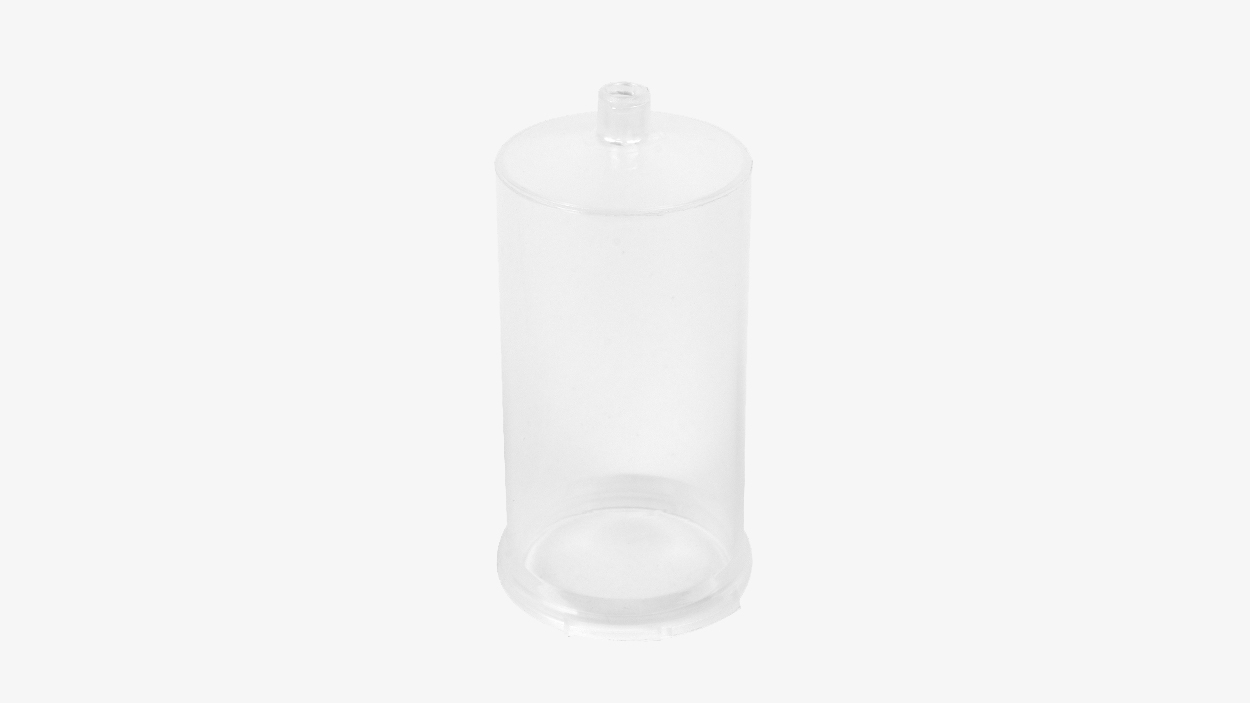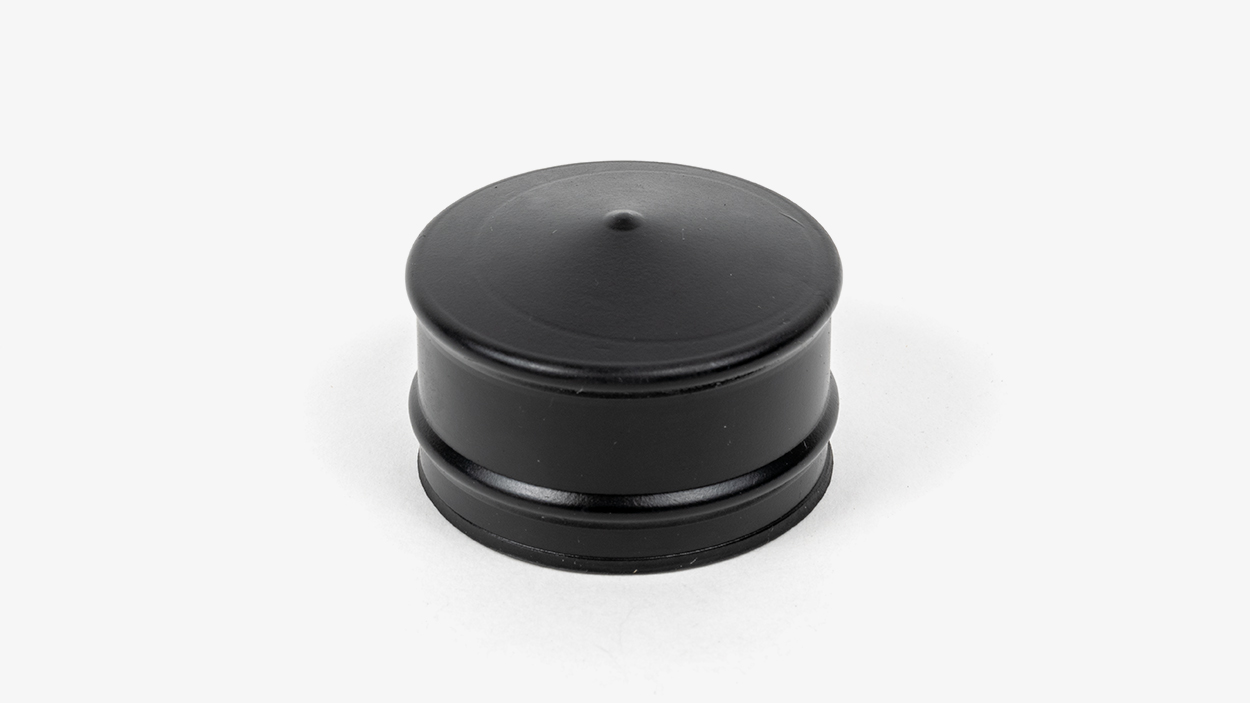Syringe For Parkinson Disease Automatic Inspection and Assembly Cell
Syringe For Parkinson Disease Automatic Inspection and Assembly Cell is a full-automatic assembling and testing rotary table for a medical device.
The center of the machine is an 8-station, fully automatic rotary table that enables the control of the syringe body and piston, and their subsequent assembly.
The cycle involves the syringe body, fed through a vibrator, being picked up by the robot and placed on the rotary table that takes the part to a station where the syringe is blown into the inner part and, at the same time, sucked into the outer part.
A further rotation of the table then accompanies the syringe to the side inspection station where, after the part is rotated of 360° degrees, a linear camera captures images of it to detect any defects.
Further inspection of the part, in its upper and lower parts, carried out at the next station, is a prelude to the lubrication stage of the syringe body. The piston body is also duly analyzed in all its parts by 4 different optical inspections before reaching the lubrication station. At this point, through an electric slide, a nozzle that dispenses medical silicone lubricates inside the syringe the sliding area of the piston rings.
The vision system is the OSAI Inspection System, and it recognizes and identifies a multitude of defects on the components by means of cameras, specific optics and illuminators, which are processed by OSAI software. The transparent bodies and the rubber pistons are checked at 100% by matricial and telecentric cameras able to detect 12 types of defects before the assembly.
The syringe and piston become one body, which the robot can pick up and place in an additional control station where, by rotating again the part of 360° degrees, checks that they have been assembled correctly. If the quality check is passed, the assembled syringe is deposited in the OK parts box. Otherwise, it ends up in the locked KO part box.
Syringe For Parkinson Disease Automatic Inspection and Assembly Cell
Syringe For Parkinson Disease Automatic Inspection and Assembly Cell is a full-automatic assembling and testing rotary table for a medical device.
The center of the machine is an 8-station, fully automatic rotary table that enables the control of the syringe body and piston, and their subsequent assembly.
The cycle involves the syringe body, fed through a vibrator, being picked up by the robot and placed on the rotary table that takes the part to a station where the syringe is blown into the inner part and, at the same time, sucked into the outer part.
A further rotation of the table then accompanies the syringe to the side inspection station where, after the part is rotated of 360° degrees, a linear camera captures images of it to detect any defects.
Further inspection of the part, in its upper and lower parts, carried out at the next station, is a prelude to the lubrication stage of the syringe body. The piston body is also duly analyzed in all its parts by 4 different optical inspections before reaching the lubrication station. At this point, through an electric slide, a nozzle that dispenses medical silicone lubricates inside the syringe the sliding area of the piston rings.
The vision system is the OSAI Inspection System, and it recognizes and identifies a multitude of defects on the components by means of cameras, specific optics and illuminators, which are processed by OSAI software. The transparent bodies and the rubber pistons are checked at 100% by matricial and telecentric cameras able to detect 12 types of defects before the assembly.
The syringe and piston become one body, which the robot can pick up and place in an additional control station where, by rotating again the part of 360° degrees, checks that they have been assembled correctly. If the quality check is passed, the assembled syringe is deposited in the OK parts box. Otherwise, it ends up in the locked KO part box.


